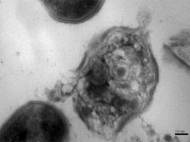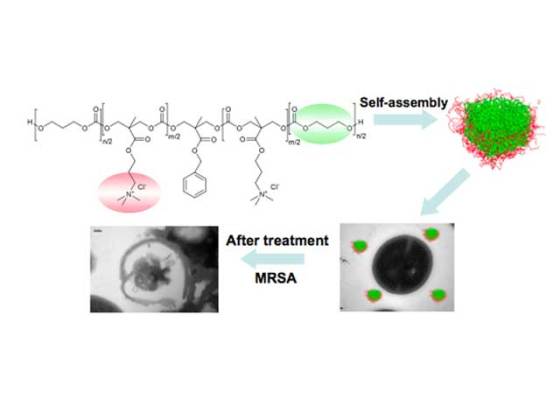IBM researchers made nanomedicine breakthrough
 Researchers from IBM and the Institute of Bioengineering and Nanotechnology have discovered that new types of polymers are able to physically detect and destroy antibiotic-resistant bacteria and infectious diseases. These agents also prevent the bacteria from developing drug resistance by actually breaking through the bacterial cell wall and membrane, a fundamentally different mode of attack compared to traditional antibiotics.
Researchers from IBM and the Institute of Bioengineering and Nanotechnology have discovered that new types of polymers are able to physically detect and destroy antibiotic-resistant bacteria and infectious diseases. These agents also prevent the bacteria from developing drug resistance by actually breaking through the bacterial cell wall and membrane, a fundamentally different mode of attack compared to traditional antibiotics.
“The number of bacteria in the palm of a hand outnumbers the entire human population”, said Dr. James Hedrick, Advanced Organic Materials Scientist, IBM Research – Almaden. “With this discovery we’ve been able to leverage decades of materials development traditionally used for semiconductor technologies to create an entirely new drug delivery mechanism that could make them more specific and effective.”
The human body’s immune system is designed to protect us from harmful substances, both inside and out, but for a variety of reasons, many of today’s conventional antibiotics are either rejected by the body or have a limited success rate in treating drug-resistant bacteria. Discovered by applying principles used in semiconductor manufacturing, these nanostructures are physically attracted to infected cells like a magnet, allowing them to selectively eradicate difficult to treat bacteria without destroying healthy cells around them.
Once these polymers come into contact with water in or on the body, they self assemble into a new polymer structure that is designed to target bacteria membranes based on electrostatic interaction and break through their cell membranes and walls. The physical nature of this action prevents bacteria from developing resistance to these nanoparticles.
Unlike most antimicrobial materials, these are biodegradable, which enhances their potential application because they are naturally eliminated from the body (rather than remaining behind and accumulating in organs).
The challenge with drug resistant infections like Methicillin-resistant Staphylococcus aureus (MRSA) is two fold. First, drug resistance occurs because microorganisms are able to evolve to effectively resist antibiotics because current treatments leave their cell wall and membrane largely undamaged. Additionally, the high doses of antibiotics needed to kill such an infection indiscriminately destroy healthy red blood cells in addition to contaminated ones.
“Using our novel nanostructures, we can offer a viable therapeutic solution for the treatment of MRSA and other infectious diseases. This exciting discovery effectively integrates our capabilities in biomedical sciences and materials research to address key issues in conventional drug delivery”, said Dr. Yiyan Yang, Group Leader, Institute of Bioengineering and Nanotechnology, Singapore.
If commercially manufactured, these biodegradable nanostructures could be injected directly into the body or applied topically to the skin, treating skin infections through consumer products like deodorant, soap, hand sanitizer, table wipes and preservatives, as well as be used to help heal wounds, tuberculosis and lung infections.
The antimicrobial polymers created by IBM Research and the Institute of Bioengineering and Nanotechnology and were tested against clinical microbial samples by the State Key Laboratory for Diagnosis and Treatment of Infectious Diseases, First Affiliated Hospital, College of Medicine and Zhejiang University in China.
For more information, read the article published in the Nature Chemistry journal named: “Biodegradable nanostructures with selective lysis of microbial membranes”.










Excellent research by IBM Scientists in nanomedicine.
Dr.A.Jagadeesh Nellore(AP),India